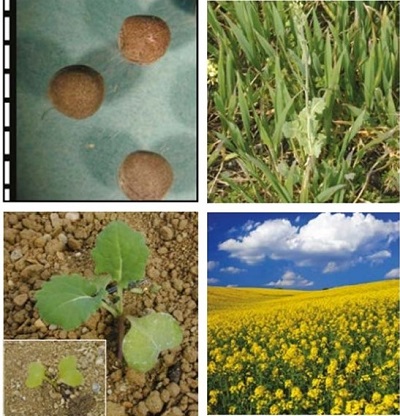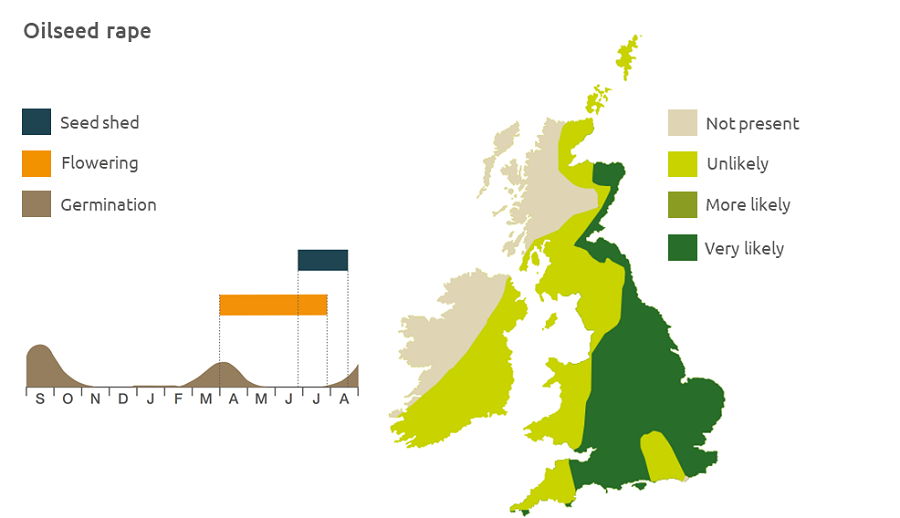- Home
- Knowledge library
- Distribution and biology of volunteer oilseed rape weeds in the UK
Distribution and biology of volunteer oilseed rape weeds in the UK
Oilseed rape can occur as a volunteer weed and is competitive in both winter wheat and spring crops. Volunteers are also associated with elevated levels of erucic acid in oilseed rape crops.
Overview
Oilseed rape (Brassica napus ssp. oleifera) volunteers commonly occur in subsequent crops.
They are particularly competitive in winter wheat and spring crops.
Autumn-germinating plants stand well over winter. Growth mainly occurs between mid March and late August.
Volunteers of spring rape varieties can be a serious problem in the winter rape crop.
Volunteers are also associated with elevated levels of erucic acid in oilseed rape crops.
How volunteers affect erucic acid risks in oilseed rape
Description
It is an annual or biennial hairless dicotyledon, with a waxy coating giving the indented leaves and stem a blue-grey colour. Leaves clasp the flowering stem. Flowers are usually bright yellow.
Key features
Plant: Leaves are smooth-surfaced and blue-green in colour.

Location and life cycle

Geographic distribution
Oilseed rape is mainly a lowland plant but has been found at altitudes of up to 420 m in Cumbria. It occurs frequently along roadsides, often as a result of falling from lorries.
Soil type
Oilseed rape prefers disturbed soils.
Seed statistics
- Seed longevity: >5 years
- Seed weight: 5 mg
- Seeds/plant: 8,000–10,000
Management
After harvest, oilseed rape seeds should be left on the soil surface for as long as possible, at least 2–3 weeks. A high percentage of seed will germinate in the autumn and can then be controlled by cultivations or by herbicides. Soil-incorporated seeds develop induced secondary dormancy and can persist for several years.
For advice on herbicides, please speak with your agronomist or adviser.
When was this information last updated?
This page is based on content from the encyclopaedia of arable weeds publication. Since it was first released in 2008, the publication has been redesigned several times but not revised. However, it remains a good foundation for general information on the distribution and biology of weeds.

